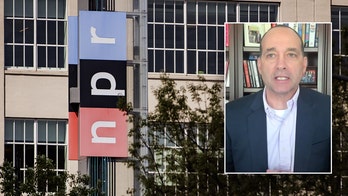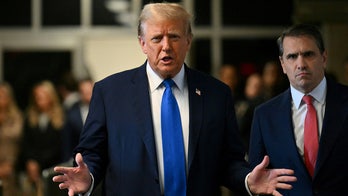GAO: ObamaCare exchanges vulnerable to fraud
Strategy Room: Nomiki Konst and T.J. McCormack debate flaws in ObamaCare system
Most ObamaCare customers will find they have to pay more for coverage in 2016 than they did this year, as they begin to select health insurance plans this weekend.
Premiums, as well as penalties for not buying insurance, are going up next year as the administration lowers expectations for overall enrollment.
The "silver plan," the second-cheapest available on the federal exchange, will cost on average 7.5 percent more next year, the Department of Health and Human Services announced.
But that varies from state to state. The plan in Oklahoma will cost nearly 36 percent more. The silver plan's premiums will increase by almost a third in Alaska and more than 34 percent in Montana. In Indiana, premiums will fall about 13 percent, and in Mississippi, by 8 percent.
"For most consumers, premium increases for 2016 are in the single digits and they will be able to find plans for less than $100 a month," said Kevin Counihan, CEO of the Health Insurance Marketplaces, in a fact sheet released by HHS.
Yet in its third year of exchanges and government insurance subsidies, ObamaCare remains under attack from Republican opponents who decry what they see as an unsustainable design.
The Obama administration projected earlier this month that 10 million will obtain health insurance through the exchanges in 2016; less than half the number the Congressional Budget Office forecasted in March.
"I know the White House is going to spin 10 million as hugely successful but it is a major failure on the part of the program," said Rep. Kevin Brady, R-Texas, of the administration's projections. "What it means is that there will be fewer people in the pool. That means that rates will continue to go up."
Health care analysts said ObamaCare's sustainability depends on more paying customers signing up through the insurance exchanges. If too few customers purchase insurance, companies will have to raise rates on existing customers to ensure they have enough money to pay for health care.
"Insurance companies by and large are losing lots of money in ObamaCare," said Robert Laszewski, the president of Health Policy and Strategy Associates, a health care consulting firm. "ObamaCare's got some really serious problems here and the enrollment, the only way for ObamaCare to solve problems is for enrollment to increase dramatically."
The law's designers included penalties to compel healthier Americans, who use fewer insurance services, to purchase insurance and keep premiums in check. With open enrollment beginning Sunday and ending Jan. 31, most who fail to obtain insurance next year will be subject to a penalty of the larger of $695 or 2.5 percent of household income -- an increase from this year's penalty.
Some argue those penalties are still too low to force potential customers to purchase expensive plans.
The Obama administration maintains the law is sustainable and claims more Americans than expected are still receiving insurance through their jobs, and therefore fewer need ObamaCare insurance.
"Early projections for marketplace sign-ups envisioned a significant migration from employer-sponsored coverage," said HHS Secretary Sylvia Mathews Burwell. "That shift has not occurred."
"The law promises to increase the range of coverage and it has succeeded quite decisively in achieving that goal so far," said Henry J. Aaron, a senior fellow of economic studies at the Brookings Institution. "More would be better; 10-13 million would be a success."





